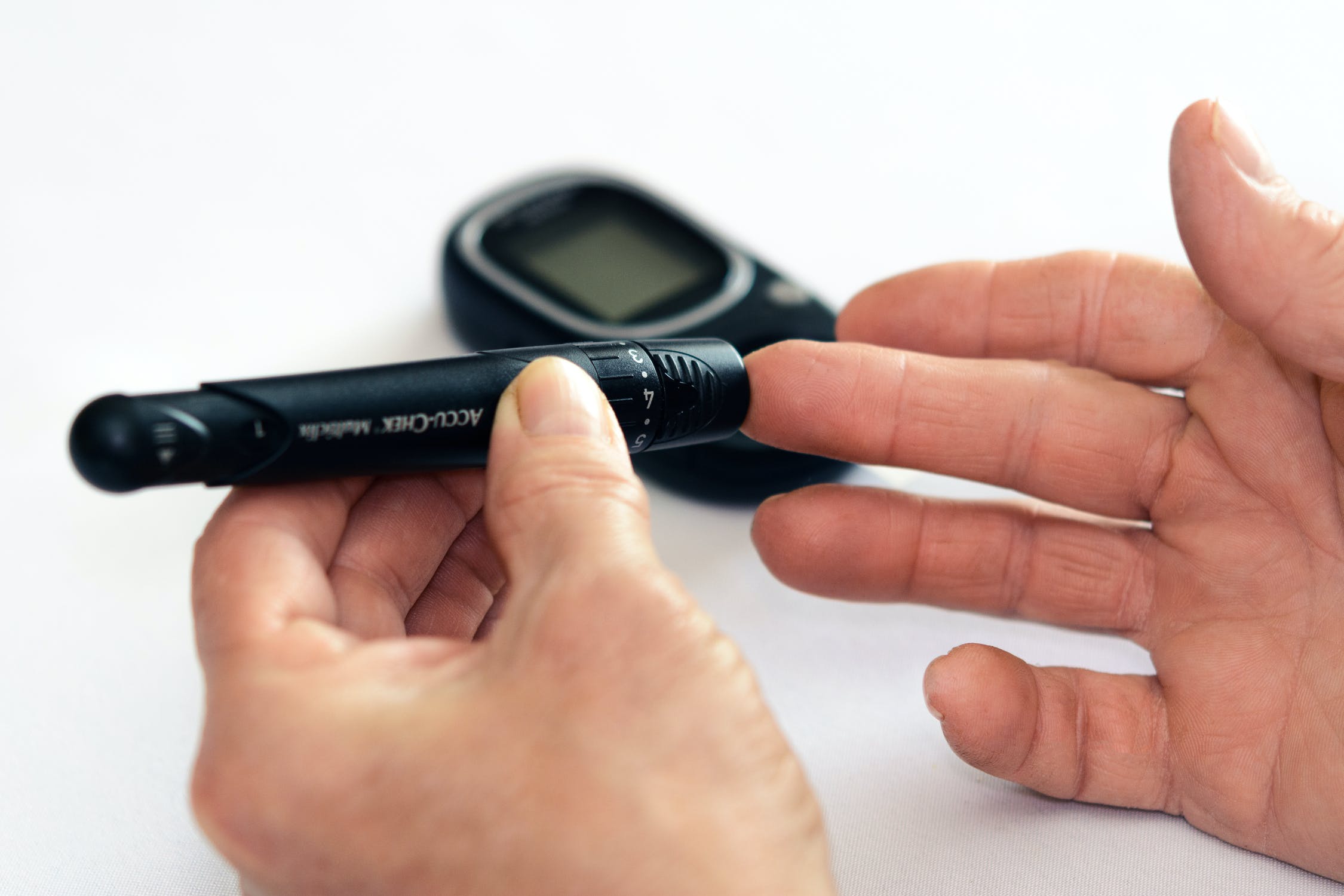Diabetes currently affects more than 3 million people in France and nearly 140 million worldwide. This term designates a whole series of pathologies, generally characterized by polydipsia (abnormal thirst) and polyuria (excretion of urine greater than normal). However, there are many names to qualify diabetes: lean, fatty, sweet, asymptomatic, alloxanic, tasteless, tanned, juvenile etc. To simplify, we can remember that there are schematically 3 major forms of this pathology: type 1 diabetes (insulin-dependent), type 2 diabetes (non-insulin-dependent) and gestational diabetes which appears transiently in pregnant women.
Diabetes mellitus is characterized by an abnormal rise in the level of glucose in the blood. The average value of the level of glucose in the blood, called “glycemia”, is 1g / liter. In the morning on an empty stomach, this value is indeed between 4.3 and 6.1 mmol / L (0.8 and 1.10 g / L). Two hours after a meal, it is 5.5 to 7.7 mmol / L (1 to 1.4 g / L).
Origin of diabetes mellitus :
Type 1 diabetes :
This diabetes usually occurs in young people, suddenly. The pancreas no longer secretes insulin (or in too small a quantity) following a destruction of the beta cells of the islets of Langerhans. The immune cells react abnormally and destroy the pancreatic cells which secrete insulin; one speaks in fact of “autoimmune disease“. The cells, without insulin, no longer have access to glucose, which accumulates in the blood, hence hyperglycemia.
Type 1 diabetes usually develops in childhood or adolescence and was, until recently, the most common form of diabetes before the age of 30. Some cases of type 1 diabetes, particularly in “non-white populations”, may not be of autoimmune origin and are therefore considered idiopathic. In particular, type 1 diabetes represents less than 10% of diabetes cases.
However, several viruses (including coxsackie, rubella, cytomegalovirus, Epstein-Barr virus, and retroviruses) have been associated with the onset of type 1 diabetes. Viruses can infect beta cells directly and destroy or elicit them. indirectly the destruction of beta cells.
Diet can also be a trigger. Exposure of infants to dairy products (especially cow’s milk and milk proteins such as beta casein), high nitrate concentrations in drinking water, and low vitamin D intake have been associated with increased risk of type 1 diabetes. Early (<4 months) or late (> 7 months) exposure to gluten and cereals would increase the production of anti-islet auto-antibodies. The mechanisms of these associations are poorly understood.
Type 2 diabetes :
Type 2 diabetes (non-insulin dependent) represents the majority of cases, often linked to obesity, lack of physical exercise, in short, an increasingly sedentary lifestyle and eating errors. repeated. Any form of diabetes should be taken very seriously. There is no such thing as harmless diabetes. The risks are many and real and the treatments, intended to ensure a constant and normal blood sugar level, must be done with the greatest care.
In type 2 diabetes, insulin secretion is inappropriate because patients have developed insulin resistance. Hepatic insulin resistance leads to an inability to suppress hepatic glucose production and peripheral insulin resistance compromises peripheral glucose uptake. This association gives rise to fasting and postprandial hypoglycaemia. Insulin levels are often very high, especially at the onset of the disease. Later in the illness, insulin production may gradually decrease, resulting in increased hyperglycemia.
The disease usually develops in adults and becomes more common with age; up to a third of adults> 65 years of age have glucose intolerance. In the elderly, blood sugar levels reach higher levels after eating than in young adults, especially after meals with a high carbohydrate load. Blood sugar levels also take longer to return to normal, particularly due to an accumulation of visceral abdominal fat and a decrease in muscle mass.
Regarding the diet of the diabetic ?
The personalized diet can therefore help patients control their blood sugar fluctuations and lose weight in type 2 diabetes.
All diabetics should receive advice on the benefits of a diet low in saturated fat and cholesterol and including moderate amounts of carbohydrates preferably from whole grains with high fiber content. Although dietary protein and fat contribute to calorie intake (and therefore weight gain or loss), only carbohydrates have a direct effect on blood sugar. A low carbohydrate, high fat diet improves glycemic control in some patients and can be used for a short period of time.
Type 1 diabetics should evaluate their intake of carbohydrates or carbohydrate equivalents in order to match insulin doses and carbohydrate intake and optimize physiological insulin substitution. Also, “determining” the amount of carbohydrate in the meal is useful for calculating the dose of insulin to inject before the meal. This approach, however, requires detailed patient information and is most effective when performed by a dietitian experienced in the management of diabetes.
Patients with type 2 diabetes should therefore restrict their calorie intake, eat regularly, increase their fiber intake, and limit the intake of refined carbohydrates and saturated fat. The consultation of a nutritionist must however supplement the advice of the doctor; both the patient and the person who prepares their meals must also be present.
Some dietary advice in case of diabetes :
- Eat meals at regular times (3 per day)
- Plan only one meal a day with meat, if possible to replace 3 times a week with fish
- Limit fats and favor those of plant origin
- Avoid sugary products
- Don’t forget about fiber (fruits and vegetables)
- Consume starchy foods without excess
- Prefer yogurts and white cheeses to cheeses
- Drink at least 1.5 liters of water per day
- Engage in physical activity
Are there any herbal remedies that work on diabetes ?
The country maple bud :
This bud exerts a hypoglycemic action and is therefore indicated in fatty or florida diabetes of the forties.
Fenugreek :
Indicated in diabetes and hypercholesterolemia, daily intake of 5 g of fenugreek for 3 months indeed improves glycemic balance, decreases HbA1c, leads to weight reduction and an improvement in the lipid profile. Fenugreek improves fasting or post-meal blood sugar (type 1 or 2 diabetes) but does not modify it in healthy men.
Camelina oil :
This oil is widely used in the overall management of patients suffering from non-insulin-dependent diabetes and insulin resistance.
E.O. of common juniper :
This essential oil causes inhibition of protein glycation. It is therefore involved in the prevention of complications of diabetes.
Green tea :
Ingestion of green tea improves insulin sensitivity, decreases glycated hemoglobin levels, increases the expression of GLUT-IV glucose transporters, improves glucose tolerance and thus decreases the incidence of diabetes.
Black seed oil :
Black seed could be a beneficial adjuvant treatment for type 2 diabetes.
Two clinical studies against placebo successively explored the effect of black seed on glycemic control and then on the lipid profile of patients with type 2 diabetes:
They observed an improvement in glycemic control (decrease in fasting blood sugar, postprandial blood sugar and HbA1c) without alteration of hepatic or renal functions, as well as an improvement in the lipid profile (reduction in total cholesterol, blood triglycerides, LDL cholesterol and increased HDL cholesterol).
Agaricus blazei :
Agaricus improves insulin resistance in people with type 2 diabetes by increasing adiponectin.
Flax :
In case of diabetes treated with insulin, taking flax seeds with a meal may require a reduction in the dose of insulin to be injected (the mucilages slow the absorption of sugars from the meal).
Blueberry berries :
A regular and moderate intake of blueberries or anthocyanins is associated with a reduced risk of cardiovascular disease, type 2 diabetes and a help in weight maintenance, neuroprotective, anti-inflammatory and antioxidant effects. Their beneficial effects on vascular function and the regulation of glycemic balance therefore have a favorable effect on the gastrointestinal microflora, with implications in degenerative diseases and in the aging process.
Common laurel :
Laurel decreases the risk of cardiovascular disease and diabetes. It has a favorable action on total cholesterol, by increasing HDL and lowering LDL.
Coriander :
Cilantro is an anti-diabetic medicine that delays the onset of diabetes. It is anti hyperglycaemic and insulin-secreting. It is given insulin-like activity.
Turmeric EPS
Turmeric is antidiabetic, it improves endothelial dysfunction induced by diabetes and improves lipid peroxidation especially with photo-irradiated curcumin.





